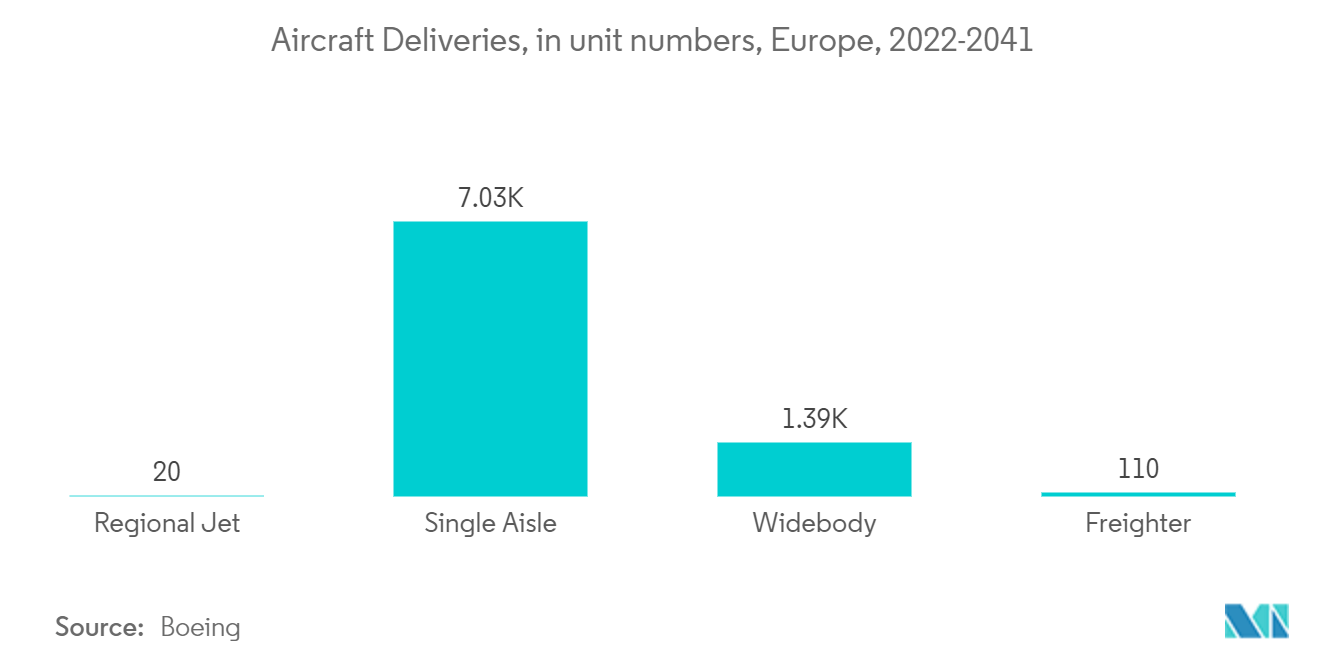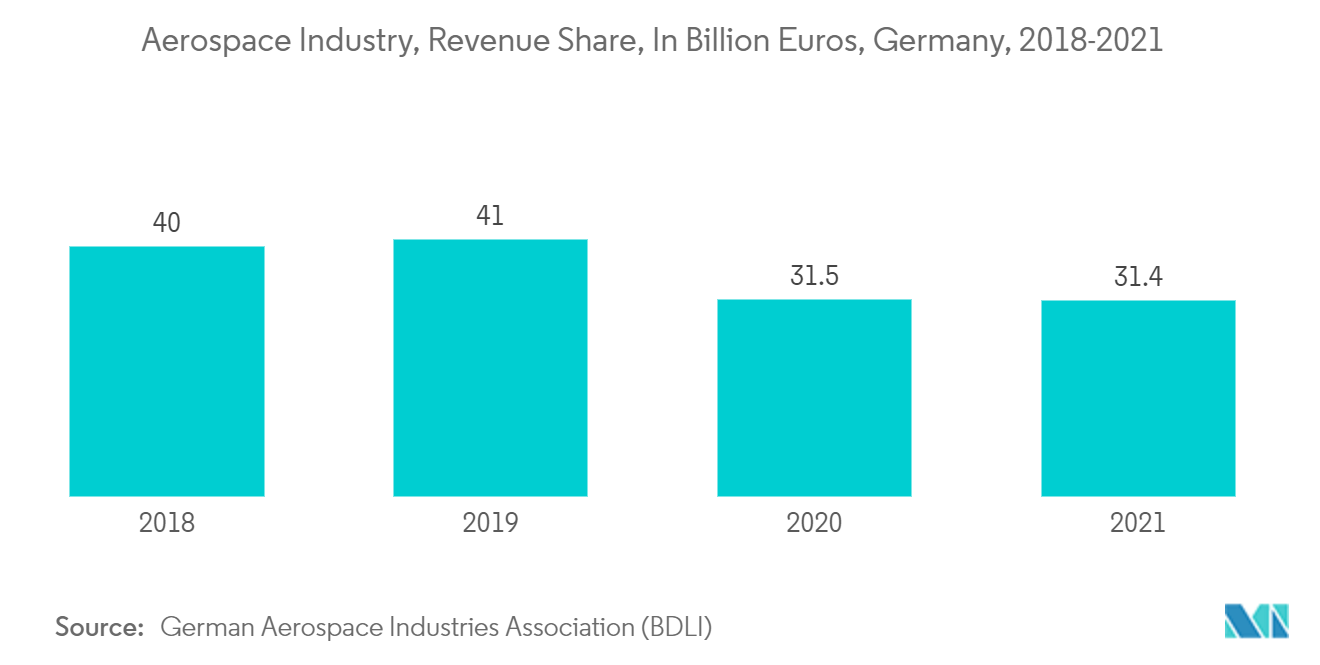Market Trends of Europe Carbon Fiber Industry
This section covers the major market trends shaping the Europe Carbon Fiber Market according to our research experts:
Aerospace and Defense Industry to Dominate the Market
- Carbon fiber is a fibrous carbon material with a micro graphite crystal structure made by fibrillation of acrylic resin or from oil/coal pitch and then given certain heat treatment. Carbon fiber is almost ten times stronger than steel and less than half its weight. It also exhibits high rigidity.
- Carbon fiber's excellent physical and mechanical qualities, which include its light weight, durability, metal-hybrid compositions, resistance to corrosion and chemical deterioration, impact resistance, and temperature resistance, make it a reliable, fuel-efficient, and top choice in the aerospace and defense sectors. It is due to thanks to these exceptional qualities.
- Carbon Fiber Reinforced Polymer (CFRP) is used in the different parts used in the aerospace industry. The CFRP provides lightweight components for the industry and is used in aircraft brakes as the filler for lightweight composite materials and high-performance insulation material.
- After going through a tough COVID-19 period, the European aerospace and defense industry demonstrated its resilience by rebounding from the tough period with strong revenue generated in the market. According to the Aerospace, Security, and Defence Industries Association of Europe (ASD), the organization plans to achieve the challenge of being the net zero emission of CO2 by 2050.
- The report by ASD also stated that the total turnover for the year 2021 was estimated to be around EUR 238 billion (USD 282 billion), an increase of 10% compared to the previous year. The major contributor to overall turnover is civil aeronautics which holds a share of about 45% of the total turnover.
- According to Boeing, Europe will have a share of 24% across the global services market value, accounting for USD 850 billion of the total market share for 2022-2041. The total number of fleets in the region is also expected to reach about 9,360 in 2041.
- The German Aerospace Industries Association (BDLI) also provided key figures related to the Aerospace and Defense Industry in its annual report. The country saw a total sale of EUR 31.4 billion (~USD 37 billion) during the financial year 2021. The major share is civil aviation, which accounts for about EUR 22 billion (~USD 26 billion). The country's civil aviation market had never seen a major upgrade compared to last year due to the COVID-19 effect on the industry.
- Moreover, Germany is the largest contributor to the European Space Agency (ESA), with a contribution of EUR 3.5 billion (~USD 4.14 billion) in the year 2022, followed by France, which had a contribution of EUR 3.25 billion (~USD 3.85 billion).
- With the increasing market for the aerospace and defense industry, the demand for carbon fiber consumption is also expected to enhance and thus drive the market forward for the forecast period.

Germany to Dominate the Market
- Germany, one of the leading manufacturing bases for the aircraft industry, is home to manufacturers from different segments, such as equipment manufacturers, material and component suppliers, engine producers, and whole system integrators.
- The country hosts many production bases for interior aircraft components, MRO (maintenance, repair, and overhaul), and lightweight construction and materials, largely in Bavaria, Bremen, Baden-Württemberg, and Mecklenburg-Vorpommern.
- According to the German Aerospace Industries Association (BDLI), the country saw total sales of EUR 31.4 billion (~USD 37 billion) during the financial year 2021. Civil aviation observed the highest market share of sales, around EUR 22 billion (~USD 26 billion). Every sixth commercial aircraft worldwide is assembled in and delivered from Germany.
- The German Association of Automotive Industry stated in its report that there will be an investment of EUR 220 billion (~USD 260.3 billion) in the German automotive industry between 2022-2026.
- OICA also published in its yearly report that there was a production of 3.3 million units of automobiles (cars and LCVs only) in the year 2021. Thus, with the increased production of aircraft and automobiles production, carbon fiber consumption will increase during the forecast period.
- Overall, the growing demand from various end-user industries is projected to drive the market in the country during the forecast period.


